Phone: +1 (903) 561-3142
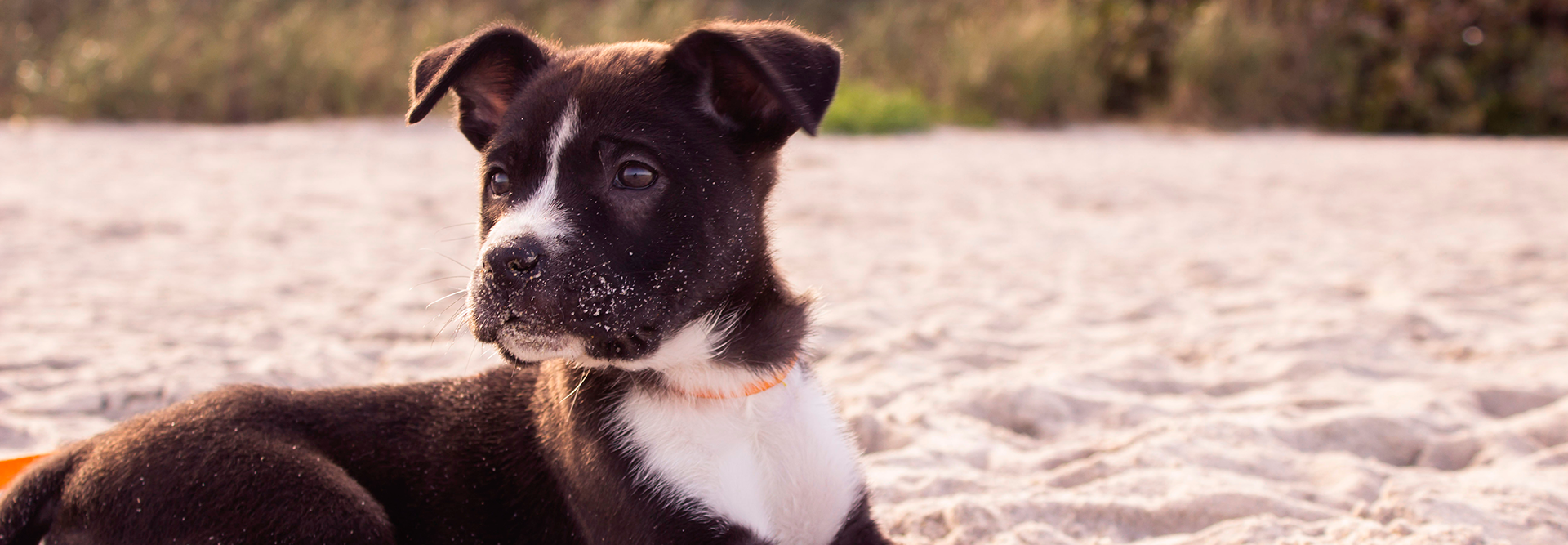
Adding a new puppy to your household whether you live with family, friends, or all by yourself is a joyful occasion. You’ve made all the necessary preparations to ensure that your furry friend will feel cozy and at home with you. The crate is comfortable, the house is puppy-proofed, and you have plenty of food […]
Adding a new puppy to your household whether you live with family, friends, or all by yourself is a joyful occasion. You’ve made all the necessary preparations to ensure that your furry friend will feel cozy and at home with you. The crate is comfortable, the house is puppy-proofed, and you have plenty of food and treats stocked up. But there’s much more you need to know about puppies in order to meet your fur baby’s psychological and emotional needs.
Petland Texas has put together the top 10 things you need to know about puppies to help you become the best puppy parent possible. Puppyhood only lasts 8 months, or at most 1 year for large breeds. Enjoy every moment of it! It’ll go by fast!
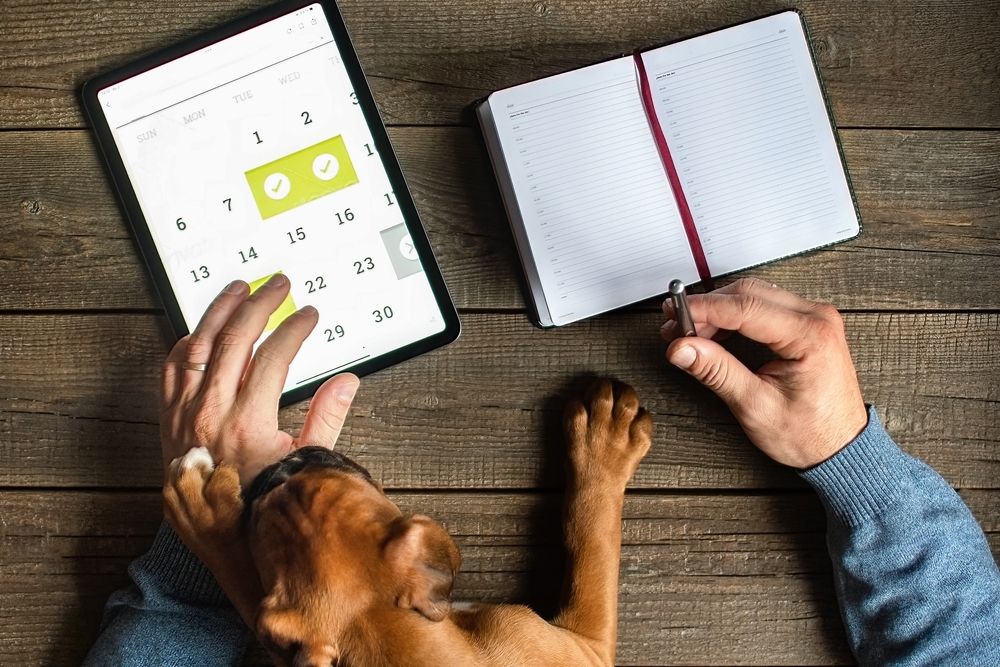
Puppies might seem spontaneous. After all, they’re known for playing at the strangest times and peeing in the strangest places, but that’s not because they’re seeking spontaneity. They just don’t know any better at their young age.
Puppies not only love a fixed daily routine, but need one. They rely on their owners to establish and provide the routine. Getting up at the same time every morning, eating meals at the same times each day, and going out for walks and bathroom trips at the same time is very important to a puppy’s sense of security and well-being.
As soon as your puppy is home with you, you’ll want to stick to a daily routine, and this routine shouldn’t change on the weekends. If during the week, you get up at 6am and start the day with your puppy, then as challenging as it may seem, you should maintain the same schedule on Saturday and Sunday with the exception of being gone all day, of course.
Really try to maintain the same puppy schedule each day. It will help your puppy catch onto what to expect. When your puppy becomes an adult dog, then there can be exceptions to the fixed schedule and it won’t disturb your dog. But as a puppy, your new furry friend really does need a fixed daily routine.
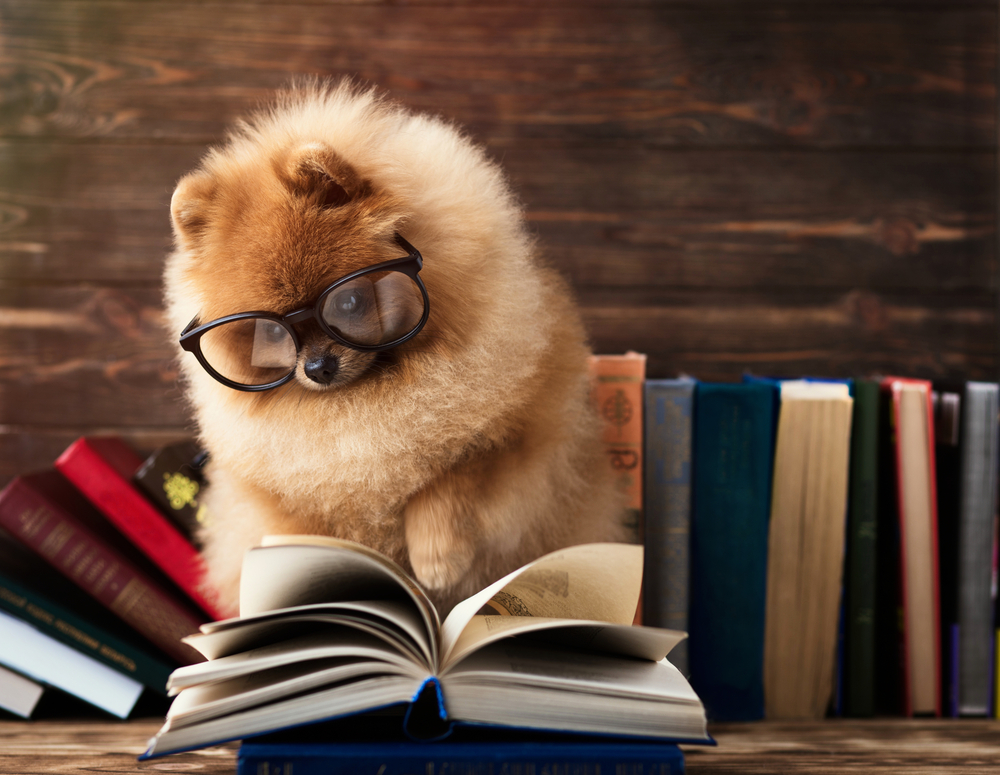
As pack animals, puppies are naturally invested in benefitting the group and keeping everyone happy. They look to their pet parents to learn routines and seek approval as they participate in those routines and activities.
Some puppies are more willful than others. Meaning, at first they will put their own curiosity and interests ahead of immediately obeying their pet parents. But this will fade as they mature and realize it’s more valuable to listen than it is to disobey.
That being said, the secret sauce to satisfying your puppy’s instinct to please you is that you must be clear, consistent, and firm when you teach your pup the house rules. Two major areas that are associated with your house rules are potty training and crate training. Obviously, your puppy going to the bathroom anywhere they want is against the house rules, but there are less obvious house rules that your puppy will learn. Just as you will remain firm in asserting that going to the bathroom must occur outside, you’ll also want to remain firm as you teach your puppy the rest of the house rules.
Being successfully consistent with your puppy has everything to do with being patient. Your puppy might learn some rules quicker than others, and potty training is a process that could take months. Accidents can and will happen along the way.
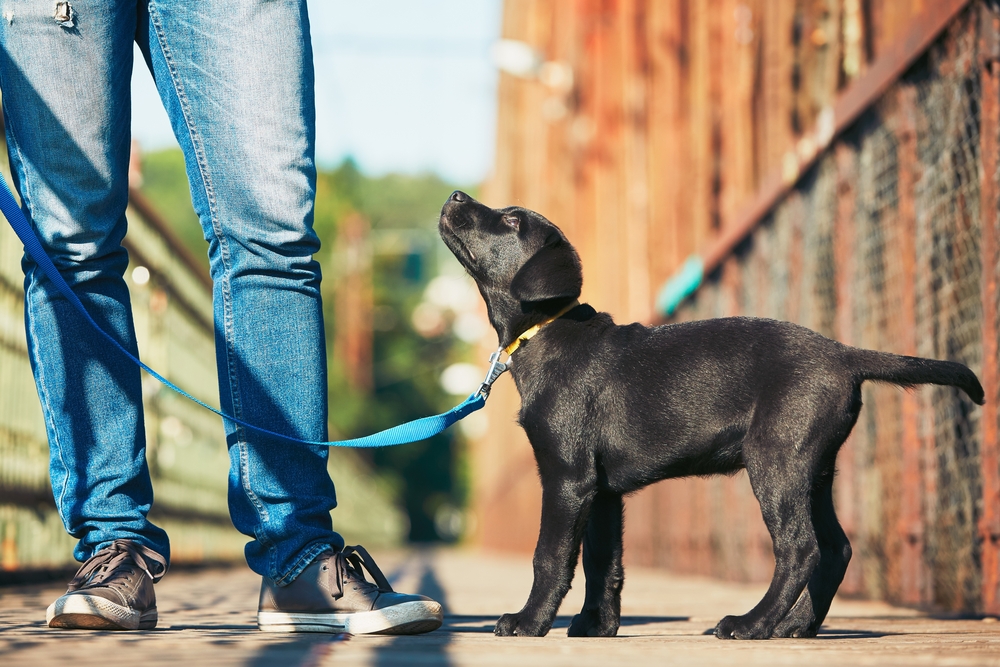
Socialization is as important to your puppy’s development as formal training. Socialization refers to the process of training your puppy how to behave around other puppies, dogs, domestic pets, children, and adults. It includes teaching your puppy what is and is not acceptable behavior when they’re interacting with new people, places, and experiences.
All puppies love meeting other animals, people, and children, but that doesn’t mean they automatically know how to behave. Part of the puppy-rearing process will include using positive and negative reinforcements as your puppy meets and plays with others.
The good news is that your puppy will look to you for approval as he explores the world. As your puppy matures, his ability to read and accept your approval of him, or lack thereof, will improve. The greatest piece of advice we can give is that you continue to give your puppy clear feedback so that he knows whether or not his behavior is good. Puppy parents who slack off in this department end up with dogs that assume everything they do is acceptable, which could spell trouble later down the road.
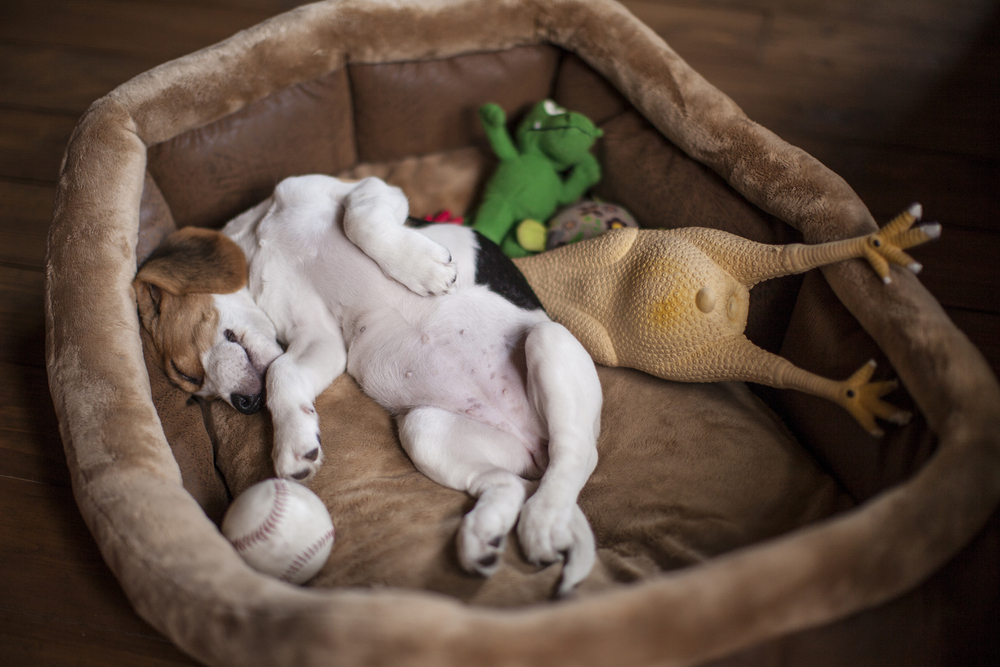
An important part of your puppy’s development is for him to become comfortable during periods of alone time. Just as developing human babies learn to self-soothe and developing children learn to entertain themselves when they have to be alone, your puppy must develop the same skills.
Nurturing this aspect of your puppy’s development can be challenging. For example, your puppy may need to learn to accept sleeping alone in his crate at night. Until he’s comfortable, he may cry for your attention. Another example is when a puppy must learn to behave and be self-sufficient while you’re working at the office all day and can’t be with him.
Learning to enjoy crate time and alone time might not come easily or naturally to your puppy, but eventually he will like his alone time. Dogs are territorial by nature, and soon your puppy will appreciate his own special space, i.e. his crate, his dog bed, or anywhere else that’s exclusively “his.” He’ll learn how to relax while he’s alone, and his overall character will be secure.
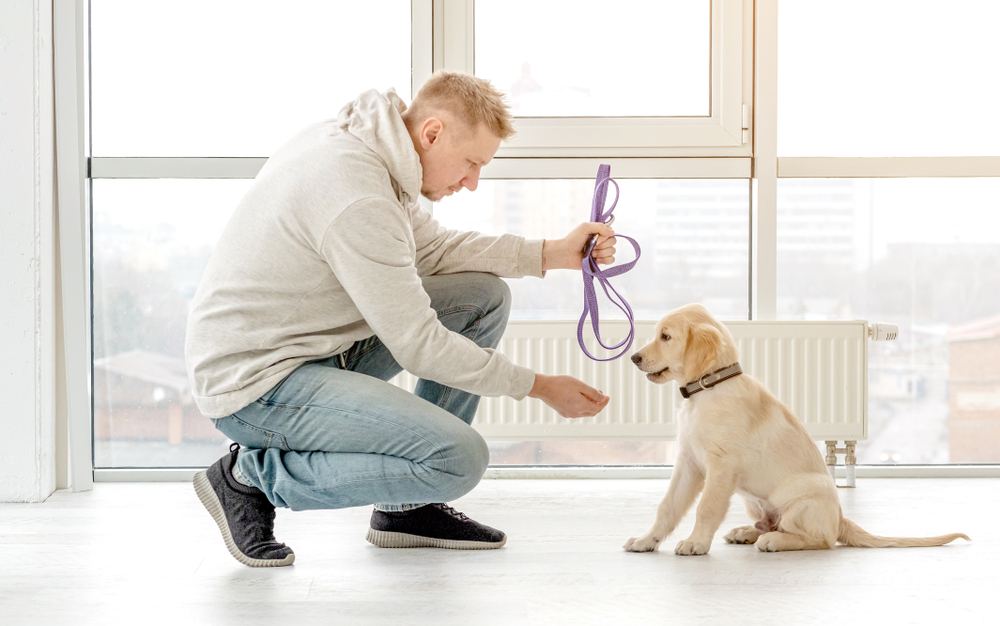
A dog’s leash or harness is a huge part of his life. Dogs typically have positive associations with their leashes because the leash means walks around the block and trips to the park! In fact, there are a lot of dogs out there who take it upon themselves to fetch their own leashes. It’s their way of asking their pet parents if they can go on a little adventure together!
At first, however, a puppy may not like their leash or harness. Afterall, it isn’t natural to be tethered and restricted. Your puppy might squirm and resist his leash or harness, and he’ll definitely try to pull and test the boundaries of what he can and cannot do when you’re out and about together.
This is why it’s so important to use the right leash or harness for your puppy’s breed, and make sure that the actual leash or harness you’re using is adjusted correctly so that it fits snuggly, but isn’t too tight. Your puppy’s leash is also an aspect of the training he will receive from you. Keeping him on a short leash versus allowing the leash to extend so that he has more freedom will all be part of his training and socialization whenever you two go out.
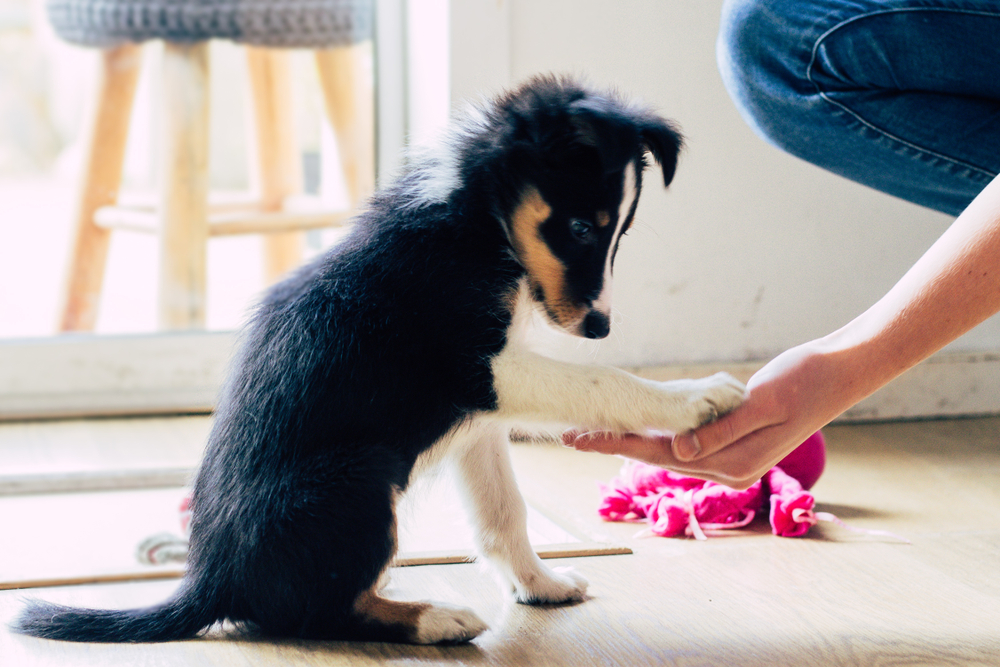
Whether or not you enjoyed the mandatory 12 years of education you received growing up, we guarantee you that puppies love learning. Period. There is no scenario where a puppy will feel bored or wish he was somewhere else while his owner is teaching him rules or commands. Puppies love pleasing their pet parents, and mastering the art of following your commands is a huge part of that.
We mention this because some inexperienced puppy parents tend to “go easy on” their puppies because they think the learning process is too difficult for their pups or “not fun.” This isn’t true. Some puppies are faster learners than others, true. But all puppies enjoy learning the basic commands of “sit,” “stay,” “down,” and “come,” especially when treats are involved!
Deeply ingrained within the canine nature is the ability to form hierarchies and the instinct to follow orders and serve as a useful member of the pack. For your puppy, you are the leader and your puppy will look to you to receive his directions. Only when a pet parent fails to offer direction does the puppy attempt to rise to the alpha position within the pack. He probably doesn’t even want to, but feels compelled to because hard-wired into his DNA is the instinct to lead if and when there are no leaders.
We encourage all new puppy parents to take control of the household “pack” whether you live alone, with friends, or have a big family. Throughout your furry friend’s 8-month puppyhood, give as much feedback as possible, let your puppy know with rewards when he’s behavior is good, and let him know when his behavior is bad by offering negative reinforcements, such as a time out if he continues to bite during playtime.
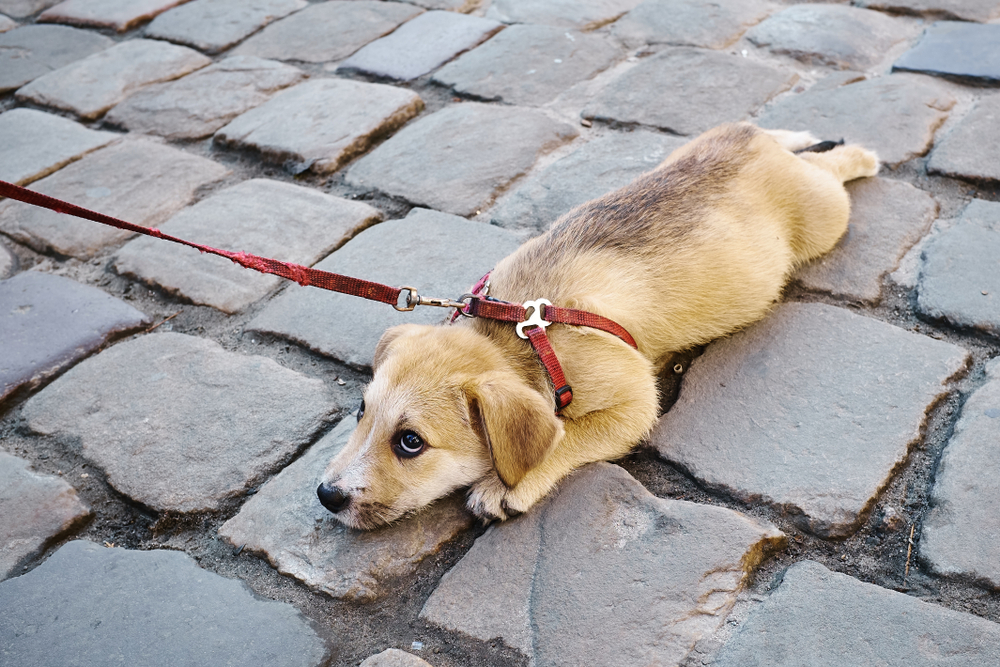
It’s important that new puppy parents do not mistake boundary testing for a refusal to learn. Never give up on maintaining the rules and training your puppy. When your puppy tests the boundaries, he isn’t suggesting that the boundary shouldn’t be there. He’s simply trying to find out how important the boundary is, and what will happen if he violates the boundary. This is natural for him to do. Canines in the wild do this, too, and fights will result. But the fights are controlled and the wolves, foxes, or prairie dogs, etc. won’t seriously injure the dissenter in order to maintain boundaries.
In your home, there is no need to “fight.” Simply maintain the boundary. For example, if one of your house rules is that there is no begging for food during your family’s meal times, then obviously no one at the table should break this rule, because doing so will only incentivize your puppy to try to break the rule, too. Equally important is to use a command if your puppy begins to beg, such as “go lie down.” If your puppy refuses, then a negative reinforcement would be in order, such as giving him a time out in his crate.
Setting and maintaining boundaries with your puppy is an important aspect of his socialization and development. So, don’t be afraid to be firm and consistent, and just know that your puppy doesn’t want you to cave. He only wants to learn your rules so that he can please you!
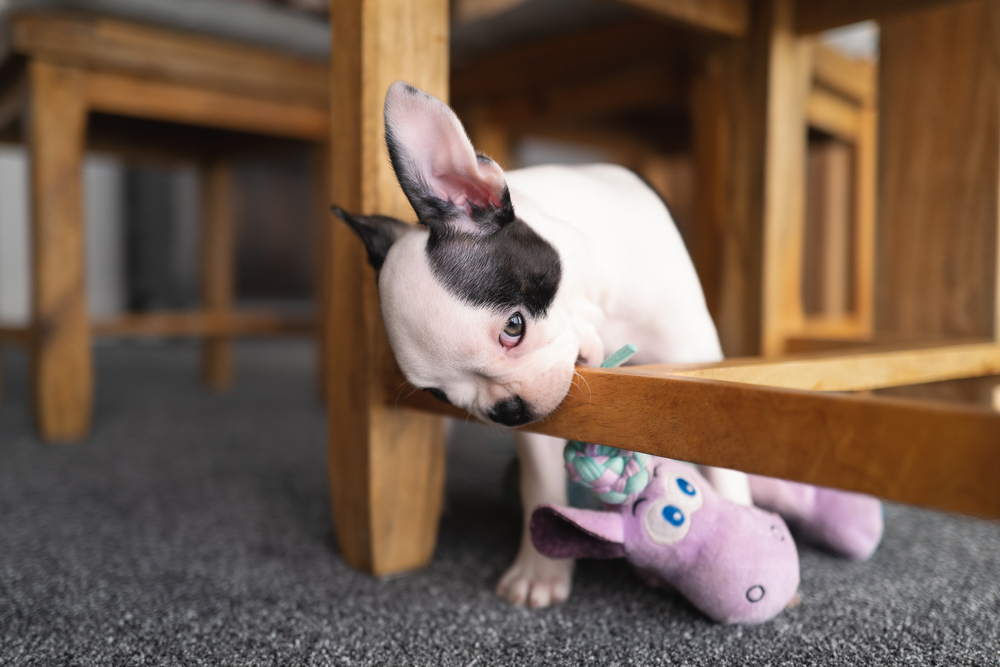
Perhaps the most surprising thing about puppies that a lot of people don’t know is that puppies go through a teething process. After birth, puppies develop “milk teeth” that are little and rounded. These teeth don’t have the potential to hurt their mom while the puppies are weaning. But these teeth are not permanent. Just as human “baby teeth” fall out after the nursing months and years are over, your puppies “milk teeth” will also fall out and be replaced by their sharp adult canine teeth.
The teething process can be uncomfortable, itchy, and even painful at times for your puppy. Teething can cause a puppy to gnaw things they shouldn’t, like your shoes, the furniture, and even your fingers! It can be challenging for puppy parents to train their puppies not to “nip” when they also know that their puppies are nipping due to the pain of teething.
But don’t worry. You don’t have to cave to your puppies nipping and gnawing, and you don’t have to let him suffer. There’s a lot you can do to help alleviate the pain of teething. There are a wide variety of chew toys that are specially-made for teething. Some of these teething chew toys are designed to be frozen in the freezer so that when your puppy gnaws on the toy, his gums will numb. The teething process should be over by the time your puppy is 6 months old, but could take longer for large breed puppies.
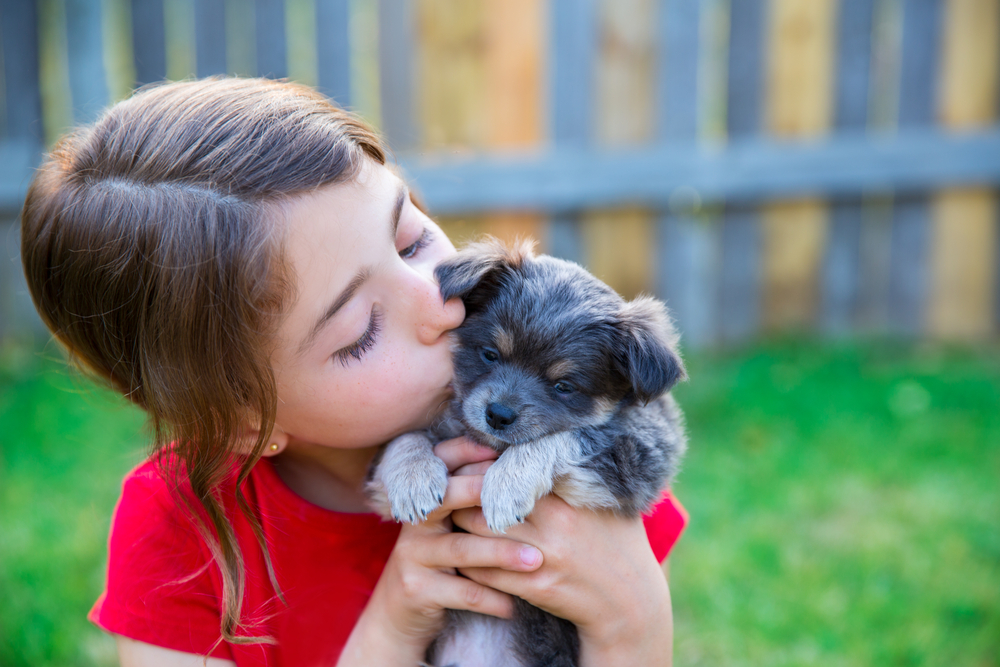
This is especially important for new puppy parents to know. Puppies that are frequently handled in many different ways for many different reasons grow up to become dogs that accept all kinds of handling. But if puppies aren’t handled often, then when they mature, they will strongly resist being handled.
It really isn’t natural for a dog to be handled by humans. So, no one can really blame a dog for resisting being handled. It’s part of his instinct to resist. But it’s for the dog’s own good that he accepts being handled. For example, dogs that resist the veterinarians that are trying to help them might not receive the help they need.
When we use the term “handled” and “handling,” we’re referring to baths, grooming, teeth brushing, nail trimming, petting, lifting, holding, hugging, being handled by vets during checkups, being handled by pet parents to go into their crates, into cars, and into new environments, and being handled by new people, such as dog sitters, dog walkers, dog trainers, and friends, family, and children.
Being handled in many different settings and situations is part of your puppy’s socialization and development, so it’s a good idea to be mindful and make sure that your puppy is experiencing being handled throughout his puppyhood.
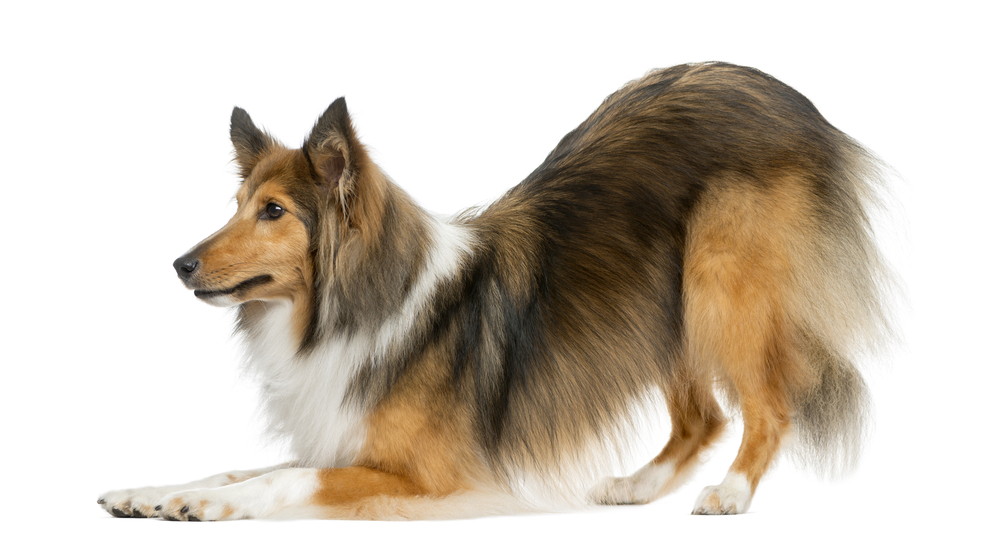
You can train your puppy to “say please” as part of teaching him commands and socializing him. This will help him exercise his impulse control. Teaching your puppy to “say please” will also help him become a clear communicator when he wants something. And training him to say please will also teach him to understand and accept “your answer.” Meaning, your puppy will learn that just because he says “please” doesn’t mean he’ll definitely get what he wants. Your answer may be “no” and if it is, he’ll have to accept that.
Training your puppy to say please will teach him how to behave in the manner you would like him to behave, even if he wants to do something that is not allowed. The purpose is to get your puppy to sit, or perform another desired action, in order for your puppy to get what he wants. It also helps your puppy learn self-control and build confidence in different environments. A dog who sits every time they want something, such as attention from people, is much easier to live with than a dog that hasn’t learned to say please and jumps up or barks when they want something.
There you have it! The 10 things you should know about puppies! If you read this article as part of trying to figure out whether or not you’re ready for a puppy, we invite you to take the next step in your journey by speaking with the dog breed experts at Petland Texas. You can also meet our puppies anytime by coming into one of our Texas locations!